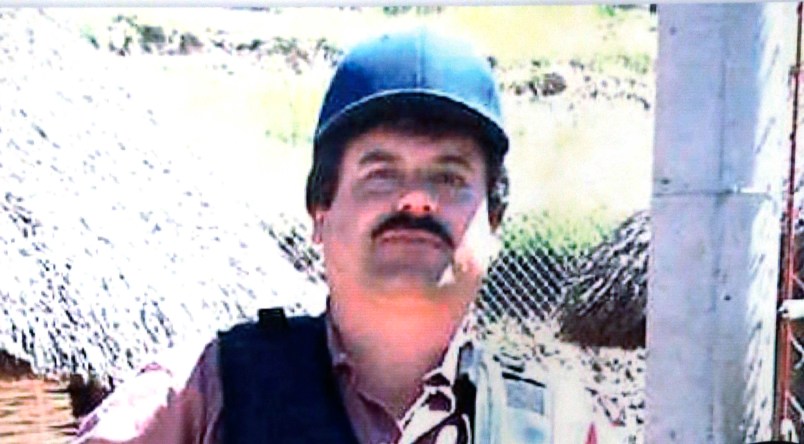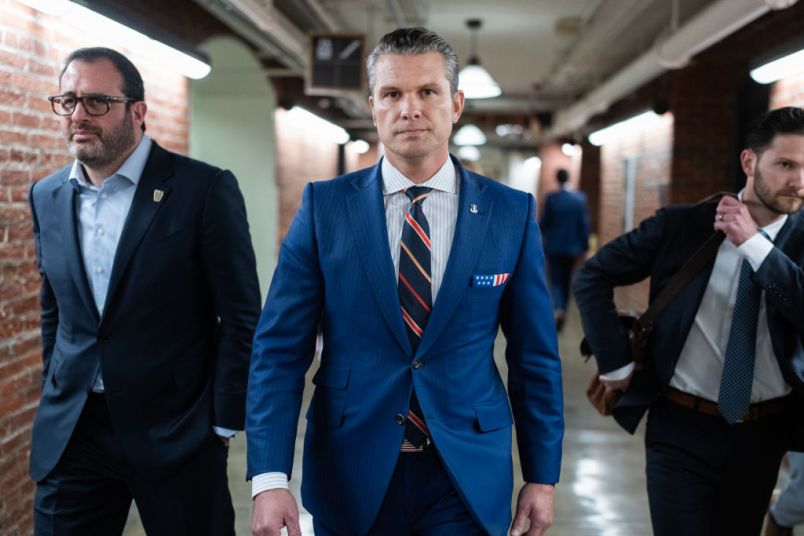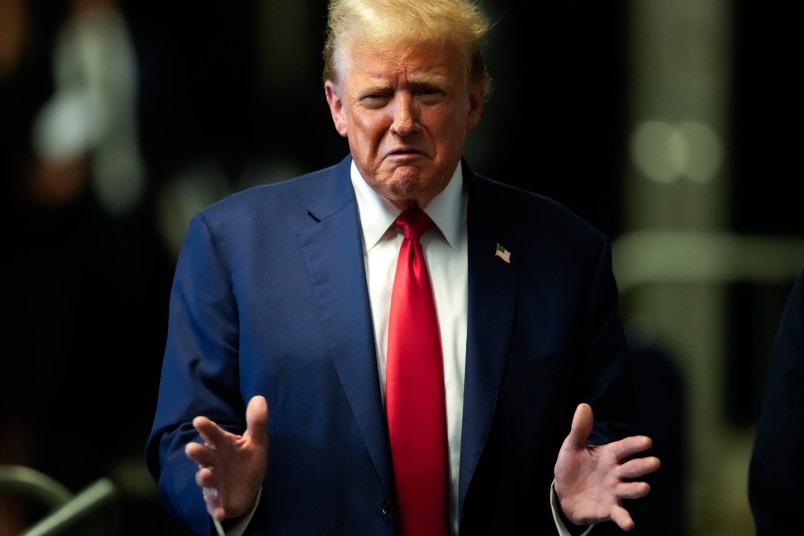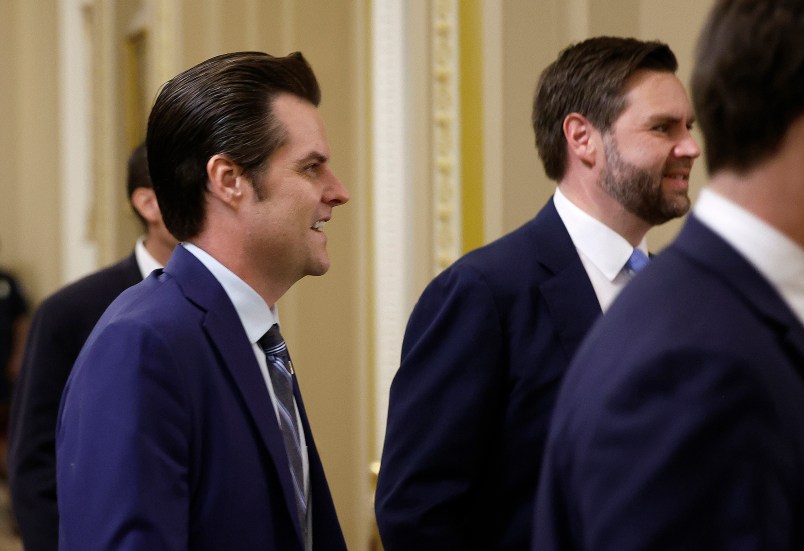MEXICO CITY (AP) — The head of Mexico’s Sinaloa Cartel was captured overnight by U.S. and Mexican authorities at a hotel in Mazatlan, Mexico, the Associated Press has learned.
A senior U.S. law enforcement official said Joaquin “El Chapo” Guzman was taken alive overnight in the beach resort town. The official was not authorized to
discuss the arrest and spoke on condition of anonymity.
Guzman, 56, faces multiple federal drug trafficking indictments in the U.S. and
is on the Drug Enforcement Administration’s most-wanted list. His drug empire stretches throughout North America and reaches as far away as Europe and Australia. His cartel has been heavily involved in the bloody drug war that has torn through parts of Mexico for the last several years.
Known as a legendary outlaw, Mexico’s Osama bin Laden and the world’s most powerful and elusive drug lord, Guzman had been pursued for weeks, the official said.
Guzman’s capture ended a long and storied manhunt. He was rumored to live everywhere from Argentina to Guatemala since he slipped out in 2001 from prison in a laundry truck — a storied feat that fed his larger-than-life persona. Because insiders aided his escape, rumors circulated for years that he was helped and protected by former Mexican President Felipe Calderon’s government, which vanquished some of his top rivals.
In more than a decade on the run, Guzman transformed himself from a middling Mexican capo into arguably the most powerful drug trafficker in the world. His fortune has grown to more than $1 billion, according to Forbes magazine, which
listed him among the “World’s Most Powerful People” and ranked him above
the presidents of France and Venezuela.
His Sinaloa Cartel grew bloodier and more powerful, taking over much of the lucrative trafficking routes along the U.S. border, including such prized cities
as Tijuana and Ciudad Juarez. Guzman’s play for power against local cartels caused a bloodbath in Tijuana and made Juarez one of the deadliest cities in the world. In little more than a year, Mexico’s biggest marijuana bust, 134 tons, and its biggest cultivation were tied to Sinaloa, as were a giant underground methamphetamine lab in western Mexico and hundreds of tons of precursor chemicals seized in Mexico and Guatemala.
His cartel’s tentacles now extend as far as Australia thanks to a sophisticated, international distribution system for cocaine and methamphetamines.
Guzman did all that with a $7 million bounty on his head and while evading thousands of law enforcement agents from the U.S. and other countries devoted to his capture. A U.S. federal indictment unsealed in San Diego in 1995 charges Guzman and 22 members of his organization with conspiracy to import over eight tons of cocaine and money laundering. A provisional arrest warrant was issued as a result of the indictment, according to the state department.
Guzman is still celebrated in folk songs and is said to have enjoyed deep protection from humble villagers in the rugged hills of Sinaloa and Durango where he has hidden from authorities. He is also thought to have contacts inside law enforcement that helped him evade capture, including a near-miss in February 2012 in the southern Baja California resort of Cabo San Lucas just after an international meeting of foreign ministers. He was vacationing in Cabo during a visit by then-U.S. Secretary of State Hillary Rodham Clinton.
“There’s no drug-trafficking organization in Mexico with the scope, the savvy, the
operational ability, expertise and knowledge as the Sinaloa cartel,” said one former U.S. law enforcement official, who couldn’t be quoted by name for security reasons. “You’ve kind of lined yourself up the New York Yankees of the drug trafficking world.”
More than 70,000 people have been killed in drug violence since former President Calderon deployed thousands of soldiers to drug hotspots upon taking office on Dec. 1, 2006. Many say his government’s assault on drug cartels and
arrest of kingpins actually fueled the growth of Sinaloa and its major rival, the Zetas, which are now going head-to-heard for lucrative territory.
The two are battling for Nuevo Laredo, a play Guzman lost to the Zetas in 2005, and hitting each other deep inside their respective territories. Sinaloa took over a key Zeta port in Veracruz, while bands of Zetas have attacked their rival deep inside the cartel’s home, western Sinaloa and Jalisco states.
The conflict has led to the gruesome dumping of dozens of bodies by both organizations in their battlegrounds.
Authorities said the battle also weakened the Sinaloa cartel and that key hits on
the top leadership in Guzman’s organization had shaken up his inner circle. In the first months of 2012, the Mexican army and federal police arrested a half dozen key Sinaloa people, including two major cocaine suppliers and a man described as the head of Guzman’s security detail.
In April last year, a video made the rounds on the Internet of a man whom U.S. authorities believed was Guzman, possibly indicating a security breach in his inner circle. In 2012, Colombian police seized 116 properties worth $15 million that they say were bought for Guzman, while the U.S. Treasury Department announced that it was placing financial sanctions on a wife and several of his sons.
While his capture may have symbolic importance, many, including Guzman’s cartel partner, Ismael “El Mayo” Zambada, say it won’t stop the violence or flow of drugs through Mexico to the United States.
“When it comes to the capos, jailed, dead or extradited — their replacements are ready,” Zambada said in an exclusive interview published in Proceso magazine in April 2010.
Guzman’s success and infamy surpassed Colombia’s Pablo Escobar, who was gunned down by police in 1993 after waging a decade-long reign of terror in the South American country, killing hundreds of police, judges, journalists and politicians.
Growing up poor, Guzman was drawn to the money being made by the flow of illegal drugs through his home state of Sinaloa.
He joined the Guadalajara cartel, run by Mexican Godfather Miguel Angel Gallardo, and rose quickly through the ranks as a ruthless businessman and skilled networker, making key contacts with politicians and police to ensure his loads made it through without problems.
After Gallardo was arrested in 1989, the gang split, and Guzman took control of Sinaloa’s operations.
The Sinaloa cartel violently seized lucrative drug routes from rivals and
built sophisticated tunnels under the U.S. border to move its loads.
In 1993, gunmen linked to the Tijuana-based Arrellano Felix cartel attempted to assassinate Guzman at the Guadalajara airport but instead killed Roman Catholic Cardinal Juan Jesus Posadas Ocampo, outraging Mexicans.
Police arrested Guzman weeks later before his escape from El Puente Grande prison in 2001. At the time of his escape, Guzman had been serving a 20-year sentence for bribery and criminal association in a maximum-security prison in Mexico.
He was rumored to have once entered a restaurant in Culiacan, capital of Sinaloa state, where his henchmen confiscated every patron’s cellphone so their boss could eat without fear of an ambush. He was also rumored to have staged an elaborate public wedding in 2007 to an 18-year-old bride that was attended by officials and local police.
Federal police say they raided the town that day, but got there just a few hours too late.
Guzman had long been reported to move around frequently, using private aircraft, bulletproof SUVs and even all-terrain vehicles.
His location was part of Mexican folklore, with rumors circulating of him being everywhere from Guatemala to almost every corner of Mexico, especially its “Golden Triangle,” a mountainous, marijuana-growing region straddling the northern states of Sinaloa, Durango and Chihuahua.
An archbishop in northern Durango state said in April 2009 that Guzman lived in a town nearby. Days later, investigators found the bodies of two slain army lieutenants with a note: “Neither the government nor priests can handle El Chapo.”
Copyright 2014 The Associated Press. All rights reserved. This material may not be published, broadcast, rewritten or redistributed.









